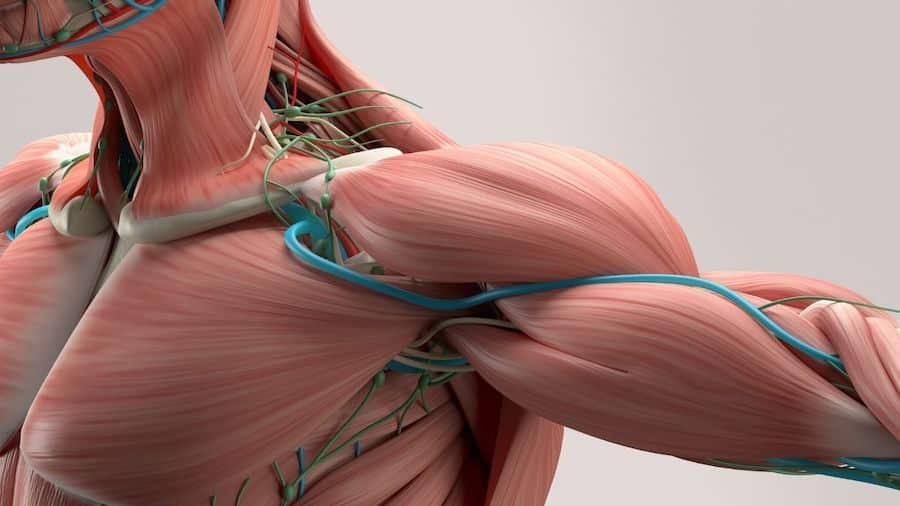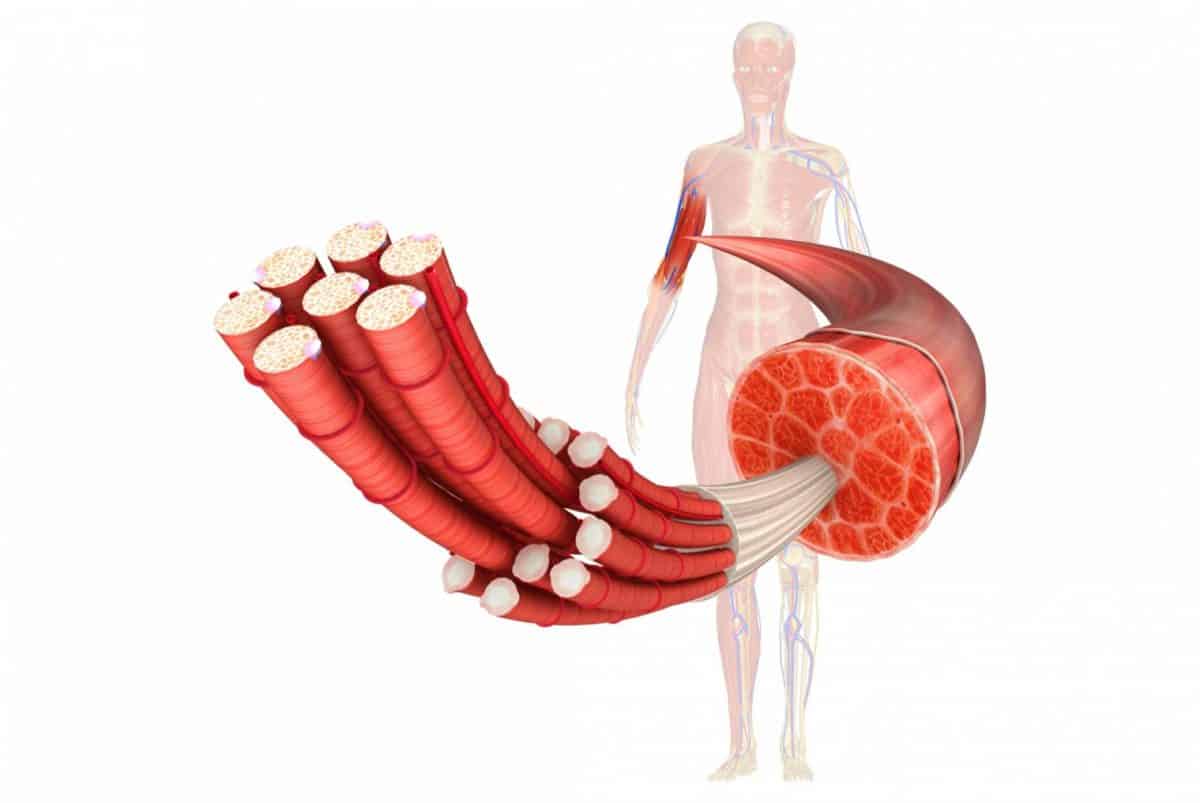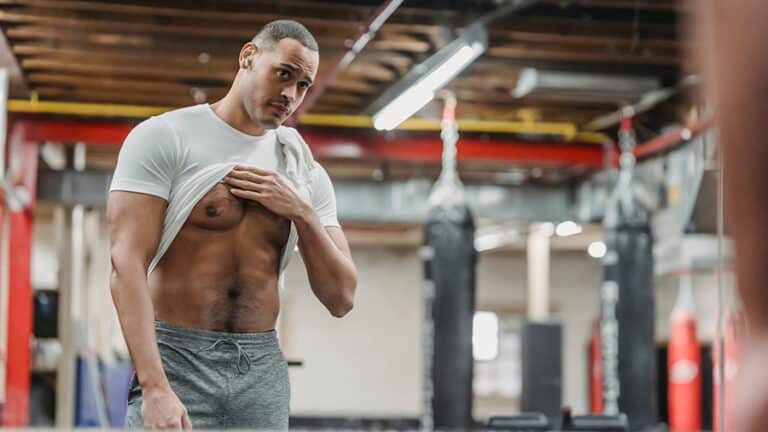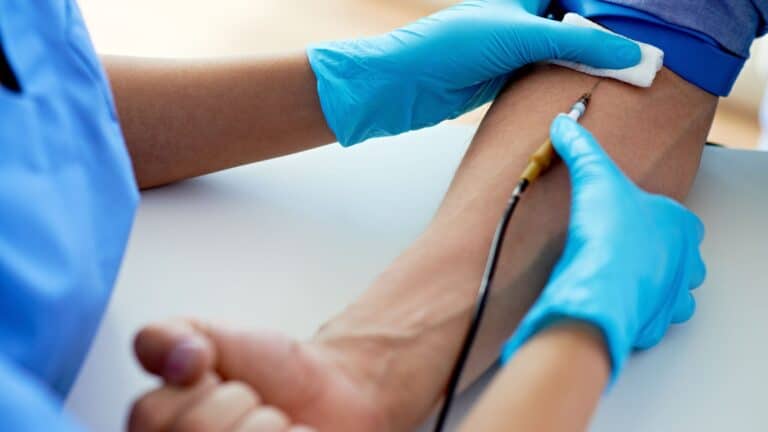How do muscle fibres develop in bodybuilding?
In order to get chocolate-bar-like abs and a well-defined musculature, it is necessary to do sports to work certain muscles. Sports activities such as weight training help our muscles to grow in size. It also helps to improve physical performance and to have a dream figure. On the other hand, strength training helps you to be healthy and to fight obesity. But biologically, how do our muscles develop? I'll give you the answer here by talking about the development of muscle fibres.
Contents
Muscles and muscle fibres
Muscles are organs of the body composed of soft tissue and characterized by their ability to contract to respond to stimulation from the nervous system. There are three different types of muscle in our bodies: heart muscle, striated muscle and smooth muscle.
What are muscles made of?
The muscle is a group of bundles, which bundles are made up of a set of muscle fibres. These fibers are in fact long cells tightly packed together and can reach several tens of centimetres. They are present everywhere and in large quantities in the large muscles of the legs and back. Inside the fibers are myofibrils, which are proteins organized in filaments. These myofibrils are of two kinds, theactin and the myosin. It is these proteins that ensure muscle contraction.
What are the two types of muscle fibres?
Inside our muscles, there are two types of muscle fibers, namely the type 1 slow fibres and type 2 fast fibres. The slow fibres are red in colour because of the presence of blood. They are involved in prolonged effort, contract very slowly, but do not increase in volume following activity. These fibres hypertrophy very little.
Type 2 fibres are white in colour because they contain little blood. They are mainly involved in short-duration efforts. They hypertrophy rapidly, increasing in volume following a sporting activity. A dense network of nerve tissue is found in these fibres, which is essential for obtaining rapid contractions.
How do our muscles grow?
Our muscles grow through a biological process that takes place in two phases: the mechanism of muscle contraction and the mechanism of hypertrophy.
Mechanism of muscle contraction
The muscle contraction takes place inside muscles and is related to their functioning. For contraction to occur, an action potential must be elicited. When a nerve stimulus occurs, the axon terminals transmit it through the synaptic cleft and cause the action potential. The action potential travels along the membrane of the muscle fibre called the sarcolemma and releases calcium.
This released calcium subsequently binds to troponin to expose the binding sites of filaments actin. This results in a bond between the myosin heads and actin filaments, which are pulled towards the centre of the contractile functional unit called the sarcomere. As a result of this binding, the muscle shortens and then contracts fully.
In addition, the calcium previously released is transferred back to the reticulum sarcoplasmic at the end of the action potential. At the same time, the muscle contraction ends and the muscle lengthens in turn. In addition, it is necessary to have enough energy reserve in the form of ATP to initiate a muscle contraction. And to ensure the continuity of concentration, the fibres draw on their glycogen and creatine phosphate reserves for ATP synthesis.
Mechanism of hypertrophy
This is the phenomenon of muscle mass gain, which is called " muscle hypertrophy ". In fact, hypertrophy is the reaction of muscles under great stress. When you lift heavier weights than your muscles can handle during weight training, your muscle tissues are stressed, resulting in microcracks in the fibers.
In other words, your fibers are damaged, and to repair themselves, the fibers trigger a overcompensation reaction. Your muscles will then create new connections between the fibres in order to become stronger and larger. Thus, this overcompensation reaction will allow your muscles to better resist the next muscular training.
For the hypertrophy mechanism to be effective, it is important for the muscle to rest in order to regenerate and gain volume. Thus, resting the muscle is as important as strength training. In short, to build muscle, you need to give it enough stimulus to damage it, then let it rest to recover. You must also eat well.
Getting to hypertrophy
During thehypertrophys, the contractile proteins thicken as the intracellular fluid in the fibres progresses and increases in volume. There are three types of hypertrophy, which it is necessary to know in order to choose the appropriate methods. You have among others the myofibrillar or sarcomere hypertrophy, the sarcoplasmic hypertrophy and the hyperplasia.
Sarcomere or myofibrillar hypertrophy
When myofibrils are subjected to intense exercise or strength training, small amounts of damage to the sarcomeres (contractile protein structures contained within the muscle fibre) occur. During recovery, the body synthesizes new proteins to replace the damaged ones and then adds new sarcomeres.
Thereafter, the muscle fiber thickens to resist new stimuli. It is a continuous training that allows create more new sarcomeres that will assemble to form new myofibrils.
Sarcoplasmic hypertrophy
Growth sarcoplasmic muscle does not cause an increase in protein structures. It is only the amount of semi-fluid plasma (glycogen and water) of the fibre which increases in volume, because no new protein structure is produced by the body. Thus, the thickening of the muscles is due to the increase in the volume of glycogen and waterThis does not lead to any gain in strength. Sarcoplasmic hypertrophy therefore promotes endurance.
Hyperplasia or activation of satellite cells
It is difficult for the human body to produce new muscle fibres. But to develop your muscles, it is possible to activate satellite cells (stem cells). The underdeveloped satellite cells in the periphery of the muscles can be activated by muscle training. ThusThe more these stem cells are activated, the more your muscles thicken and grow.. And to multiply them, it is advisable to use specific training techniques.
How to develop your fibres in bodybuilding?
To develop your muscle fibres, you must perform a series of training sessions for hypertrophy in weight training. You can perform sets of hypertrophy workouts between 8 and 15 reps until failure to have both sarcomeric and sarcoplasmic growth. Triggering both types of hypertrophy is important to have durable muscles that gain strength over time.
In addition, it is recommended to start with one strength training session per week and then gradually increase it until you reach three sessions per week or more if possible. However, muscle development takes time and can last between 3 and 6 months at least. You should therefore be very patient and not overdo it, as sleep and rest are essential for muscle mass gain.
Tips for muscle reconstruction
To rebuild your muscles, you must not only rest, but also have a good diet. It is recommended that you hydrate before, during and after training. You should drink up to 2 L of waterTake small sips of water. In addition, it is important that you end your workout with a "cool down" phase to reduce the recovery rate.
In addition, it is essential that you make stretching sessions at the end of your workout. It is advisable to opt for cold/warm showers by alternating hot and cold water during your bath. After your workouts, you should eat foods rich in glucose, fructose and protein.
Thus, you can eat fruits (citrus fruits, grapes, bananas), fresh vegetables (raw vegetables, vegetables) and foods rich in animal proteins (fish, meat). Finally, you should sleep between 7 and 8 hours per night to repair the traumas suffered by the body during training. In addition to sleep, you can also use the sauna to relax your mind and body.
Need to develop your muscle mass through coaching?
Other articles to read :
Does muscle memory really exist?
Shark cartilage: A good remedy for the joints
What exactly are isometric exercises?
How to choose your weights in bodybuilding?









It is interesting to note in this period when the state is
It is interesting to note in this period where the state has closed the gyms and confines us to our homes, the physical evolution inherent in a "home" training.
Personally, I maintain a steady pace, trying to stick to the usual exercises as much as possible. I compensate with supersets, longer sets.
In fact, no matter what I'm working on, I still end up tired. Despite the difficulty I felt, I didn't sweat like I did at the gym, a sign that the intensity must not be the same. The next day my muscles are still sore, a sign that I've worked hard.
Well, just like the first lockdown, I can still see myself getting flattened. It's not a matter of strength because I can handle weight. So there remains the idea of movements that are necessarily less well done, of less efficient sequences.
What I'm wondering is if the strength is still there, what is the muscle volume that's decreasing? Is it sarcoplasmic, or in other words, intra-cellular fluid, as they used to say?
No, there's no such thing as bloat, it's a made up term that doesn't make sense. Muscles are made up of 70% of water anyway. You flatten out because your muscles don't retain as much glycogen because they don't need to have as much as when you train in the gym with heavy loads. Especially when doing long superset and lighter sets, you flatten out if you don't eat enough carbs or drink enough (sometimes also a lack of sodium).
Interesting, I hadn't seen it like that and indeed I lifted my foot off the carbs. Like what, a pro, that makes the difference !
Thanks Julien, I'll rectify that!